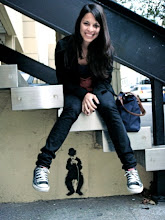
Renowned film critic Siegfried Kracauer once said that films are hieroglyphics of a society because they represent the deep worries, concerns, realities, humor, and trends of their period. That was the case of The Rules of the Game, which enraged the audience of its time as they felt identified with the protagonists of the film. Even thought The Rules of the Game would not be necessarily classified as a realist film, Renoir was able to accurately convey the mindset of this period in a crudely realistic tone. Frivolity was used to cover up the fatality related to death and war in which everyone’s minds were focused. By 1939, when The Rules of the Game was first released, France had recently joined Great Britain to fight against Germany in World War II. The fear of an unavoidable period of massacre, destruction, and economic distress was the blueprint for the film. The presence of war was similar to the air that fills every room, scene, and atmosphere: something that is apparently invisible but nonetheless unavoidably present. As Renoir explains, “knowing that we were going to have war, in being absolutely convinced of it, my work was impregnated with it, despite myself” (Sesonske, 6). However, by not talking directly about war, the message of the film has a more intrinsic impact than it would otherwise.
Violence is represented in an incredibly raw and direct fashion during the hunting sequence. The preparation for the hunt mirrors different bands of soldiers preparing for combat. The guests check their weapons and proper locations to settle down like soldier would do to ensure a complete extermination of their enemies. Once the hunting begins, it becomes almost unbearable to watch as repetitive shots of rabbits, falling and twitching, seem to have no end. In this sequence, Renoir switches his style: the camera pans steadily at an eye level angle and it takes on a documentary tone as it records authentic death and killing. The intensity and memorability of this sequence lays on the numerous shots of different length of rabbits running in the field accompanied by complete silence. Tension builds up as the apparent peaceful scenery does not truly cover up the morbidity of the scene. The camera seems to takes on the point of view of the rabbits whose lives will be interrupted by gunfire in a manner of minutes. In fact, the first shot abruptly breaks this absolute silence, violating not only the prey’s lives but also the audience’s audiovisual senses by creating a shock effect. As rabbit after rabbit falls face flat in the ground, a longer shot focuses on one rabbits while it twitches in the ground until its last drop of life evaporates. Renoir was especially skillful in integrating this sequence in the film. The field of the villa covered by dead rabbits mirrors to an almost perfect degree the real battlefields paved with dead bodies. Even though Renoir never explicitly acknowledges war and death, this sequence is exponentially more dreadful and effective than an enacted killing scene would have been. It is a peak beneath the surface of this society and into their real unconscious and motivations.

No comments:
Post a Comment